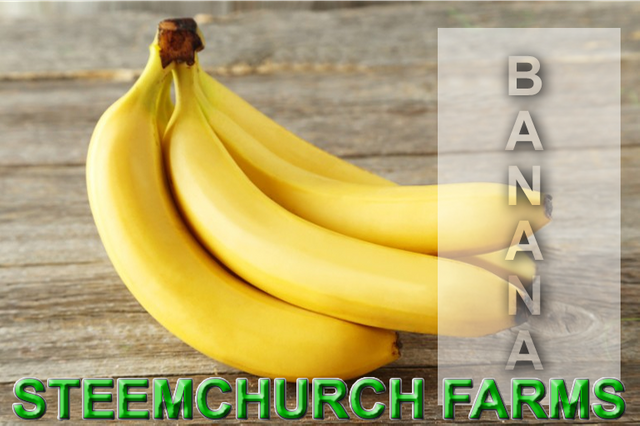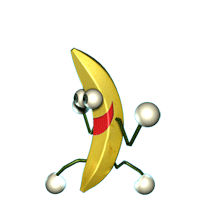 !
!
Its origin belongs to the Indomalaya region where they have been cultivated for thousands of years. From Indonesia it spread south and west, reaching Hawaii and Polynesia. European merchants brought news of this tree to Europe around the 3rd century BC. C., although this fruit was only introduced until the tenth century. From the plantations of West Africa the Portuguese colonizers would take it to South America in the sixteenth century, to be exact to Santo Domingo.


The banana is a more cultivated tropical fruit and is considered one of the four most important in global terms according to the nutritionists of the world. The Latin American and Caribbean countries produce the bulk of bananas that enter international trade, although the main producers are India and China, being the main crop of the hot and humid regions of south-west Asia. The main importers are Europe, USA Japan and Canada. Northern consumers appreciate it only as a dessert, but it is an essential part of the daily diet for the inhabitants of more than one hundred tropical and subtropical countries.
After rice, wheat and corn, plantain is one of the most important crops in the world. Besides being considered a basic product, it constitutes an important source of employment and income in many countries that are in development.


Bananas require a warm climate and constant humidity. It needs an average temperature of 25-27 ºC, with prolonged and regularly well distributed rains. These conditions are met at latitude 30 to 31º north or south and from 1 to 2 m altitude. The wet plains near the sea, sheltered from the winds and irrigable, are preferable. The growth stops at temperatures below 18 ºC, causing damage at temperatures below 14 ºC and higher than 44 ºC.
In the Mediterranean basin it may be possible to grow it, although not to produce selected fruits, in places where the average annual temperature ranges between 14 and 20 ºC and winter temperatures do not fall below 2 ºC.
In tropical conditions, light has no effect on the development of the plant as in subtropical conditions, although as the intensity of the light decreases, the vegetative cycle lengthens a bit. The development of the children will also be influenced by light in quantity and intensity.
As for the very strong winds break the petioles of the leaves, break the pseudostems or tear the entire plants inclusive.


They are those soils that have a sandy loam texture, clay loam, silty clay loam and silty loam, and must also be fertile, permeable, deep (1.2-1.5 m), well drained and rich, especially in nitrogenous materials. The cultivation of bananas prefers, however, soils rich in potassium, clay-siliceous, limy, or those obtained by the clearing of forests, susceptible to irrigation in summer, but not retaining water in winter.
The banana tree has tolerance to the acidity of the soil, oscillating the pH between 4.5-8, with the optimum being 6.5. On the other hand, bananas develop best on flat soils, with slopes of 0-1%.


Reproduction is only possible through vegetative or asexual propagation. Therefore, the "seeds" used for sowing correspond to vegetative parts such as shoots and corms or sons that, once separated from the mother plant, can carry out their growth and production cycle.
It is advisable that the farmer chooses the planting material from vigorous mother plants, that they do not have visual signs of attacks of plagues and diseases, doing cleaning and their respective disinfection. The selected children must be sword type, avoiding the use of those labeled as orejones or water, since they have lost their vitality due to nutritional imbalances or water stress.


Selection of the land.
It is of greater importance when establishing the crop, since it is related to the useful life and quality of the plantation, with mechanization of certain tasks, ease of harvest and management of phytosanitary problems. Therefore, the crop should be near water sources, must have access roads and must have good drainage.
Preparation of the land.
The physical properties of the soil such as texture, structure and topography of the land are very important. This should involve minimum plowing and harrowing work so as to avoid disturbing the soil and not predisposing the plants to overturning.
Sowing.
It must decide parameters such as variety, precipitation, physical and chemical properties of the soil and system of godchild.
The selection of the seed for sowing the banana should be done using those strains or seeds from seedlings of plantations that are healthy, being able to use as a propagation material strains of mature plants, strains of immature plants (this is the best for planting) and strains of sword children. All of them must be cleaned by removing the old roots and disinfecting correctly later.
Once the seed is chosen, the holes are opened and prepared, the size of which will depend on the size. In general, we have holes of 0.30-0.40 x 0.30-0.40 x 0.30-0.40 m. It is convenient to add 2 to 3 kg of organic fertilizer at the bottom of the hole to improve the development of the roots in this way. Subsequently, the corm is placed in the hole and covered with the rest of the soil that was removed from there. The infill soil is rammed to avoid air chambers that facilitate root rot by ponding.
Once the sowing is done, it is convenient to carry out an irrigation.

Weed control
The control of weeds is a big problem a bit serious. Since the root system of the banana is superficial, competition with weeds must be reduced by water, light and nutrients. In addition, many of these plants are host to insect and pest diseases.
Fertilization.
In tropical conditions, nitrogen compounds are washed quickly, therefore it is advisable to fractionate the application of this element throughout the vegetative cycle.
After two months, urea or ammonium nitrate should be added, repeating the treatment at 3 and 4 months. In the fifth month the application of a fertilizer rich in potassium is made, as it is one of the most important elements for the fruiting of the crop.
In plantations that are already adult, a formula rich in potassium (500 g of sulphate or potassium chloride) will continue to be used, distributed in the largest number of annual applications, especially in acid soils. Soil analysis must be taken into account to determine more accurately current fertility conditions and develop an adequate fertilization program.
The use of organic fertilizer is very appropriate in this crop not only because it improves the physical conditions of the soil, but because it provides nutrients. Among the favorable effects of the use of organic matter, there is the improvement of the soil structure, a greater linkage of the soil particles and the increase of the exchange capacity.

Irrigation
It requires a lot of water and is sensitive to drought, since it makes it difficult for the inflorescences to come out, resulting in crooked bunches and very short radicle strenghts that prevent the fruits from straightening. The drought also causes foliar obstruction, causing problems in the development of the leaves.
Proper soil moisture is very important in order to have good yields, particularly during the dry months of the year, when adequate irrigation must be ensured. However, we must be careful not to water in excess, since the banana is extremely susceptible to damage caused by floods and continuously wet or inadequately drained soils.
On the other hand, the banana tree can only take advantage of the soil water when it has enough air available, therefore, the amount of water and air in the soil must be in a certain balance to obtain a high yield in the crop .
As mentioned, drainage is one of the most important practices of the crop. A good drainage system increases production and decreases the incidence of pests and diseases. It is recommended to perform the drainage, when the water layer is less than 40-60 cm from the surface, even temporarily.

Childless
It is a cultural practice that aims to obtain an adequate density per unit area, maintain a uniform spacing between plants, regulate the number of children per production unit and choose the best children. With a constant and efficient deshonado one has greater production and distributed this one throughout the year.
In a banana plant there are 3 kinds of children:
Sons of sword or puyones: they are born very deep and far from the mother plant, growing strong and vigorous. The foliage ends in a point, hence its name and is the best located.
- Children of water: these develop broad leaves at an early age due to nutritional deficiencies. They should always be eliminated and used when there is only one sword child.
-Rebrotes: are those that return to sprout after being cut. These also develop broad leaves prematurely and differ from the previous ones in that you can see in them the scar where the cut was made. The rapidity of growth of this sprouts decides the frequency of the undoing.
When proceeding to perform the deshijado the cuts must be made in such a way that the growth bud of the son is eliminated, thus avoiding the regrowth. The cut is directed from the inside out so as not to hurt the mother and then proceeds to cover the cut part.

Leafless
This has the purpose of eliminating and cleaning dried or folded leaves at the base of clusters that are interfering with their development in order to obtain a better exposure of the clusters to light, air and heat. Maintaining a suitable assimilating surface should leave between 8 and 9 leaves per plant.
The cut should be made as close as possible to the base of the blade. If part of a young and healthy leaf interferes a bunch can be removed that part by tearing or cutting, leaving the rest to fulfill its function. It is recommended to defoliate every 15-21 days, increasing the frequency when the sigatoka infection is severe.
Desmane
It involves the occasional elimination of the last hand or false hand and one or both of the following ones that are considered not to reach the minimum size required, favoring the development of the others. This is done when the fruits are placed in the downward direction, without using any tool, simply by hand.
This topic was analyzed and studied from the page and source www.infoagro.com







Excellent information, very well written my sister. I congratulate you. God bless you
Downvoting a post can decrease pending rewards and make it less visible. Common reasons:
Submit
thanks for very interesting and informative article about my favorite fruit Banana
Downvoting a post can decrease pending rewards and make it less visible. Common reasons:
Submit
Thankful you've taken your time reading my publication.
Downvoting a post can decrease pending rewards and make it less visible. Common reasons:
Submit